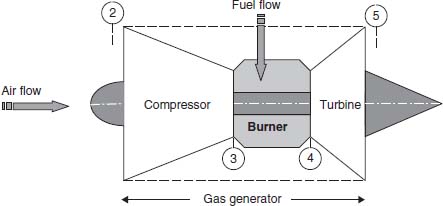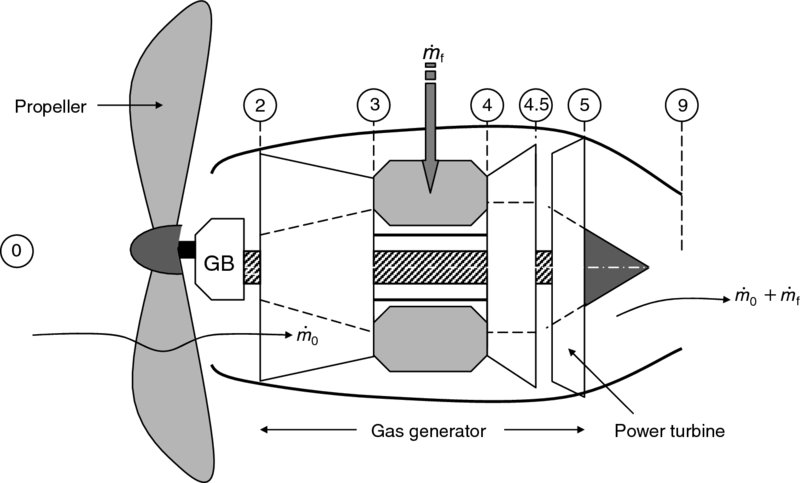4.5 The Turboprop Engine
4.5.1 Introduction
To construct a turboprop engine, we start with a gas generator.

The turbine in the gas generator provides the shaft power to the compressor. However, we recognize that the gas in station 5 is still highly energetic (i.e., high pt and Tt) and capable of producing shaft power, similar to a turbofan engine. Once this shaft power is produced in a follow-on turbine stage that is called “power” or “free” turbine, we can supply the shaft power to a propeller. A schematic drawing of this arrangement is shown in Figure 4.51.

 FIGURE 4.51 Schematic drawing of a turboprop engine with station numbers identified
FIGURE 4.51 Schematic drawing of a turboprop engine with station numbers identified
The attractiveness of a turbopropeller engine as compared with a turbofan engine lies in its ability to offer a very large bypass ratio, which may be between 30 and 100. The large bypass ratio, by necessity, will then cut back on the exhaust velocities of the propulsor, thereby attaining higher propulsive efficiencies for the engine. The high propulsive efficiency, however, comes at a price. The limitation on the tip Mach number of a rotating propeller, say to less than 1.3, leads to a cruise Mach number in the 0.7–0.8 range for advanced ...
Get Aircraft Propulsion, 2nd Edition now with the O’Reilly learning platform.
O’Reilly members experience books, live events, courses curated by job role, and more from O’Reilly and nearly 200 top publishers.

